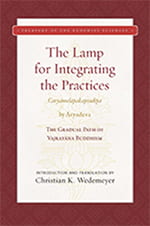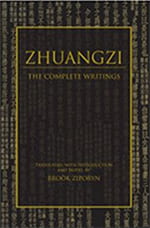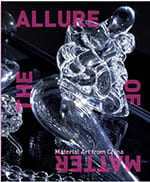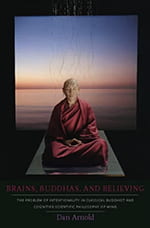Recent Faculty Publications
Reflecting the range of work encouraged in the University’s various programs relating to Buddhist studies, recent faculty publications include:
Published in 2024:

In Tibetan Manuscripts and Early Printed Books, Volume I & Volume II, Matthew T. Kapstein (Emeritus) and an international team of specialists provide a comprehensive introduction to the material and aesthetic features of the wide range of Tibetan books, described in detail and illustrated with copious full-color photographs, and explore the major categories of traditional Tibetan books, introducing their specific features and the main approaches to their study.

The Sherpa Buddhist monk Ngawang Leksh (1913– 1983), familiarly known as Auleshi—a name that might be approximated as “Uncle Benedict” in English—occupies a unique place in the history of Buddhism in twentieth century Nepal. The Life and Work of Auleshi: Sherpa Buddhist Artist and Adept by Ngawang Tengye, Hugh R. Downs, and Matthew T. Kapstein (Emeritus), with translations by Tib Shelf, makes available what may be recalled of the monk’s life and work on the occasion of the hundred-and-tenth anniversary of his birth and the fortieth since his death. At once an accomplished artist and a yogi living always in retreat, Auleshi eschewed the trappings of a “Buddhist master” but taught instead through his art and, above all, his personal example. In this, he embodied the ideal of transmitting the Dharma without teaching a word.
Published in 2023:

Learning from the West, Learning from the East: The Emergence of the Study of Buddhism in Japan and Europe before 1900
Editors: Stephan Kigensan Licha and Hans-Martin Krämer
The essays collected in this edited volume by Stephan Kigensan Licha and Hans-Martin Krämer for the first time foreground the fundamental role Asian actors played in the formation of scholarly knowledge on Buddhism and the emergence of Buddhist studies as an academic discipline in Europe and Asia during the second half of the nineteenth century. The contributions focus on different aspects of the interchange between Japanese Buddhists and their European interlocutors ranging from the halls of Oxford to the temples of Nara. They break the mold of previous scholarship and redress the imbalances inherent in Eurocentric accounts of the construction of Buddhism as an object of professorial interest.

In Esoteric Zen, Stephan Kigensan Licha demonstrates tantric teachings and Zen were closely entwined movements that often developed within the same circles of thinkers and texts. Drawing on newly discovered manuscript materials, he shows how medieval practitioners constructed a unique form of Zen by drawing on tantric doctrinal discourses.

In Daodejing, Brook Ziporyn‘s translation is a transformative new edition of Taoism’s central text that overturns its reputation for calming, gnomic wisdom, revealing instead a work of “philosophical dynamite”.

In Meiji Modern: Fifty Years of New Japan (Yale University Press, 2023) Chelsea Foxwell and Bradley M. Bailey take a fresh look at the art of Japan’s Meiji era (1868–1912), through a vivid selection of approximately 175 objects drawn from early public and private collections across the United States, including newly discovered prints, photographs, textiles, paintings, and craft objects. Featuring motifs such as the sea and nature, Buddhist deities, contemporary life, and mythical animals, Meiji Modern highlights these themes and their transformation with the introduction of newly imported techniques and materials at the intersection of art, industry, and society.
Published in 2022:

Buddhism and Comparative Constitutional Law (Cambridge University Press, 2022) offers the first comprehensive account of the entanglements of Buddhism and constitutional law in Sri Lanka, Myanmar, Thailand, Cambodia, Vietnam, Tibet, Bhutan, China, Mongolia, Korea, and Japan. Editors Tom Ginsburg and Benjamin Schonthal (PhD’13) bring together an interdisciplinary team of experts who offer a complex portrait of “the Buddhist-constitutional complex,” demonstrating the intricate and powerful ways in which Buddhist and constitutional ideas merged, interacted and co-evolved. The contributors also highlight the important ways in which Buddhist actors have (re)conceived Western liberal ideals such as constitutionalism, rule of law, and secularism.
Published in 2021:

The Lamp for Integrating the Practices (Caryamelapakapradipa):The Gradual Path of Vajrayana Buddhism by Aryadeva, in this edition thoroughly annotated and translated by Christian K. Wedemeyer, is a systematic and comprehensive exposition of the most advanced yogas of the Esoteric Community Tantra (Guhyasamaja-tantra) as espoused by the Noble (Nagarjuna) tradition, an influential school of interpretation within the Mahayoga traditions of Indian Buddhist mysticism. This edition includes an introductory study discussing the history of the Guhyasamaja and its exegetical traditions, surveying the scriptural and commentarial sources of the Nagarjuna tradition, and analyzing in detail the contents of the Lamp, as well as a detailed, trilingual glossary.
Published in 2020:

In Zhuangzi: The Complete Writings, Brook Ziporyn’s carefully crafted, richly annotated translation of the complete writings of Zhuangzi—including a lucid introduction, a glossary of essential terms, and a bibliography—provides readers with an engaging and provocative deep dive into this magical work.
Published in 2019:

Reasons and Lives in Buddhist Traditions: this collection of essays pays tribute to Matthew Kapstein (Emeritus), Numata Professor of Buddhist Studies, a luminary in the field, by exemplifying some of the diverse work in Buddhist and Asian studies that has been impacted by his scholarship and teaching. Engaging matters as diverse as the legal foundations of Tibetan religious thought, the teaching careers of modern Chinese Buddhists, the history of Bhutan, and the hermeneutical insights of Vasubandhu, these essays are offered as testament to a singular scholar and teacher whose wide-ranging work is unified by a rare intellectual selflessness. Edited by Daniel A. Arnold, Associate Professor of Philosophy of Religions.

From the 1980s, many Chinese artists have experimented with a range of unconventional materials. Their works–in plastic, paper, silk, ash, and tobacco–form a major trend in Chinese art. The Allure of Matter (University of Chicago Press, 2019), by Wu Hung and Orianna Cacchione with Christine Mehring and Trevor Smith, offers the first serious consideration of these ground-breaking material explorations, coining the term Material Art to describe works that place “matter” itself as the primary vehicle of investigation and expression. The book contains four ground-breaking essays, profiles of twenty-five artists, and corresponding color images.
Published in 2016:

Emptiness and Omnipresence: An Essential Introduction to Tiantai Buddhism by Brook A. Ziporyn, Professor of Chinese Religion, Philosophy, and Comparative Thought, puts Tiantai into dialogue with modern philosophical concerns to draw out its implications for ethics, epistemology, and metaphysics. Ziporyn reveals the profound insights of Tiantai Buddhism while stimulating philosophical reflection on its unexpected effects.
Older Publications:

Premodern Buddhists are sometimes characterized as veritable “mind scientists” whose insights anticipate modern research on the brain and mind. Aiming to complicate this story, in Brains, Buddhas, and Believing: The Problem of Intentionality in Classical Buddhist and Cognitive Scientific Philosophy of Mind, Dan Arnold confronts a significant obstacle to popular attempts at harmonizing classical Buddhist and modern scientific thought: since most Indian Buddhists held that the mental continuum is uninterrupted by death (its continuity is what Buddhists mean by “rebirth”), they would have no truck with the idea that everything about the mental can be explained in terms of brain events. Nevertheless, a predominant stream of Indian Buddhist thought, associated with the seventh-century thinker Dharmakirti, turns out to be vulnerable to arguments modern philosophers have leveled against physicalism.

In Buddhists, Brahmins, and Belief: Epistemology in South Asian Philosophy of Religion, Dan Arnold examines how the Brahmanical tradition of Purva Mimamsa and the writings of the seventh-century Buddhist Madhyamika philosopher Candrakirti challenged dominant Indian Buddhist views of epistemology. Arnold retrieves these two very different but equally important voices of philosophical dissent, showing them to have developed highly sophisticated and cogent critiques of influential Buddhist epistemologists such as Dignaga and Dharmakirti. His analysis—developed in conversation with modern Western philosophers like William Alston and J. L. Austin—offers an innovative reinterpretation of the Indian philosophical tradition, while suggesting that pre-modern Indian thinkers have much to contribute to contemporary philosophical debates.
Paul Copp
The Body Incantatory: Spells and the Ritual Imagination in Medieval Chinese Buddhism (Columbia University Press, 2014)
- Short-listed for the 2015 Best First Book in the History of Religions Award from the American Academy of Religion.
Matthew Kapstein (Emeritus)
Tibetan Buddhism: A Very Short Introduction (Oxford University Press, 2013)
Sources of Tibetan Tradition (Columbia University Press, 2013)
- Edited with Kurtis Schaeffer and Gary Tuttle
Buddhism between Tibet and China (Wisdom Publications, 2009)
James Ketelaar (Emeritus)
Of Heretics and Martyrs in Meiji Japan: Buddhism and its Persecution (Princeton University Press, 1990)
- Winner of the 1991 Hans Rosenhaupt Memorial Book Award from the Woodrow Wilson National Fellowship Foundation.
Katherine R. Tsiang
A Companion to Chinese Art (Blackwell, 2015)
- Edited with Martin J. Powers
Echoes of the Past: The Buddhist Cave Temples of Xiangtangshan (University of Chicago, 2010).
Christian Wedemeyer
Making Sense of Tantric Buddhism: History, Semiology, and Transgression in the Indian Traditions (Columbia University Press, 2012)
- Winner of the 2013 Award for Excellence in the Study of Religion: Historical Studies from the American Academy of Religion.
Āryadeva’s Lamp that Integrates the Practices (Caryāmelāpakapradīpa): The Gradual Path of Vajrayāna Buddhism According to the Esoteric Community Noble Tradition (American Institute of Buddhist Studies/Columbia University Press, 2007)
Tibetan Buddhist Literature and Practice: Studies in its Formative Period, 900-1400 (Brill, 2006)
- Edited with Ronald Davidson
Wei-Cheng Lin
Building a Sacred Mountain: The Buddhist Architecture of China’s Mount Wutai (University of Washington Press, 2014).
Wu Hung
Chinese Sculpture (Yale University Press, 2006)
- Co-authored withAngela Falco Howard, Li Song, and Yang Hong
- Selected as “The Best of the Best of the University Presses: Books You Should Know About” by the Association of American University Presses (AAUP)
Body and Face in Chinese Visual Culture (Harvard University Press, 2005)
- Edited with Katherine R. Tsiang
Brook Ziporyn
Emptiness and Omnipresence: The Lotus Sutra and Tiantai Buddhism (Indiana University Press, 2016)
Ironies of Oneness and Difference: Coherence in Early Chinese Thought; Prolegomena to the Study of Li 理 (SUNY Press, 2012).
Zhuangzi: The Essential Writings with Selections from Traditional Commentaries (Hackett, 2009)